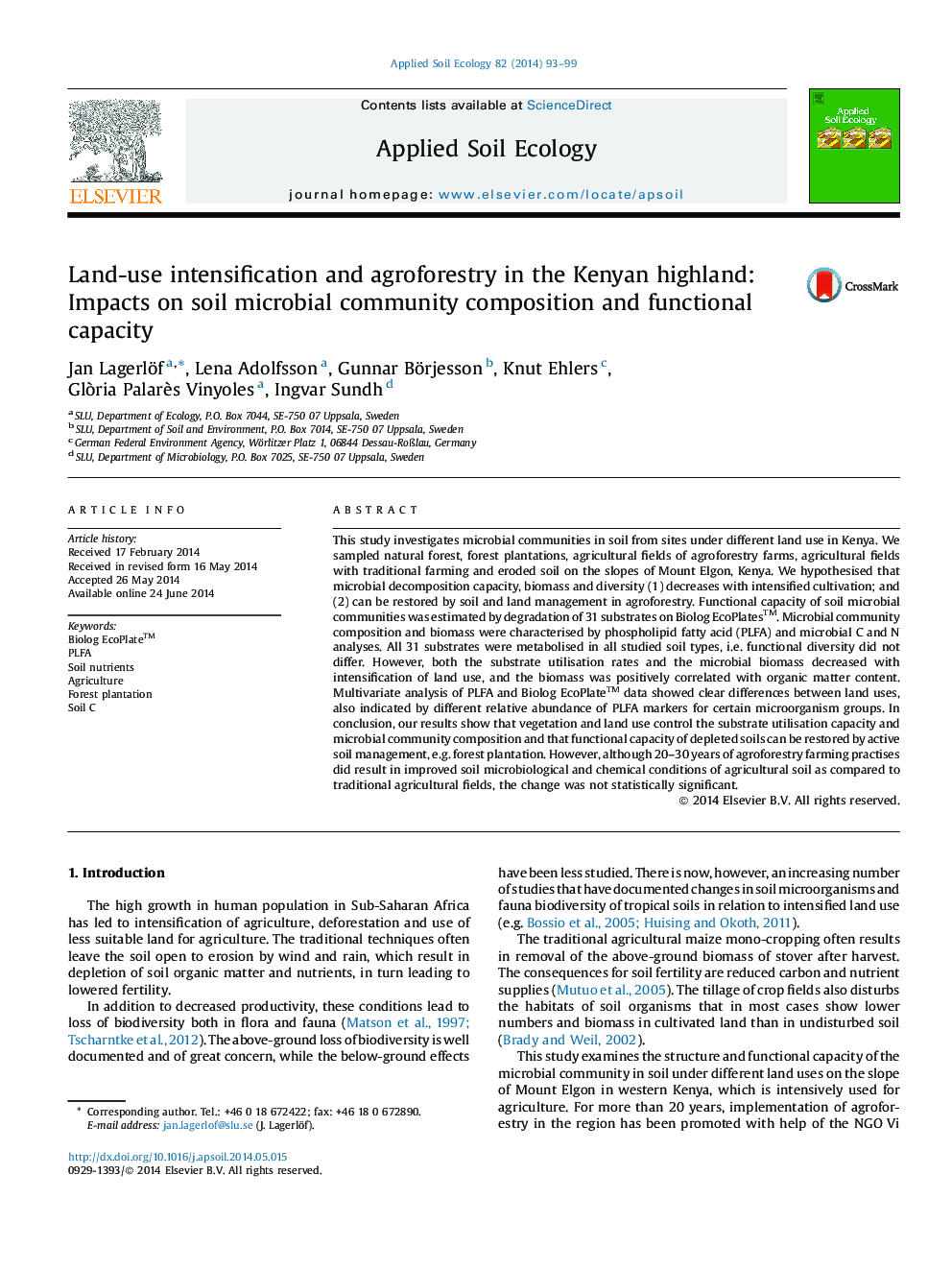| کد مقاله | کد نشریه | سال انتشار | مقاله انگلیسی | نسخه تمام متن |
|---|---|---|---|---|
| 4382155 | 1617801 | 2014 | 7 صفحه PDF | دانلود رایگان |
• Land use intensification decreased microbial biomass and substrate use rate.
• All tested substrates were metabolized irrespective of land use intensification.
• Relative abundance of some microorganism groups changed with intensification.
• Planted forest on agricultural land increased microbial biomass and metabolism.
• 20 years’ agroforestry did not change microorganism community in agriculture.
This study investigates microbial communities in soil from sites under different land use in Kenya. We sampled natural forest, forest plantations, agricultural fields of agroforestry farms, agricultural fields with traditional farming and eroded soil on the slopes of Mount Elgon, Kenya. We hypothesised that microbial decomposition capacity, biomass and diversity (1) decreases with intensified cultivation; and (2) can be restored by soil and land management in agroforestry. Functional capacity of soil microbial communities was estimated by degradation of 31 substrates on Biolog EcoPlates™. Microbial community composition and biomass were characterised by phospholipid fatty acid (PLFA) and microbial C and N analyses. All 31 substrates were metabolised in all studied soil types, i.e. functional diversity did not differ. However, both the substrate utilisation rates and the microbial biomass decreased with intensification of land use, and the biomass was positively correlated with organic matter content. Multivariate analysis of PLFA and Biolog EcoPlate™ data showed clear differences between land uses, also indicated by different relative abundance of PLFA markers for certain microorganism groups. In conclusion, our results show that vegetation and land use control the substrate utilisation capacity and microbial community composition and that functional capacity of depleted soils can be restored by active soil management, e.g. forest plantation. However, although 20–30 years of agroforestry farming practises did result in improved soil microbiological and chemical conditions of agricultural soil as compared to traditional agricultural fields, the change was not statistically significant.
Journal: Applied Soil Ecology - Volume 82, October 2014, Pages 93–99
